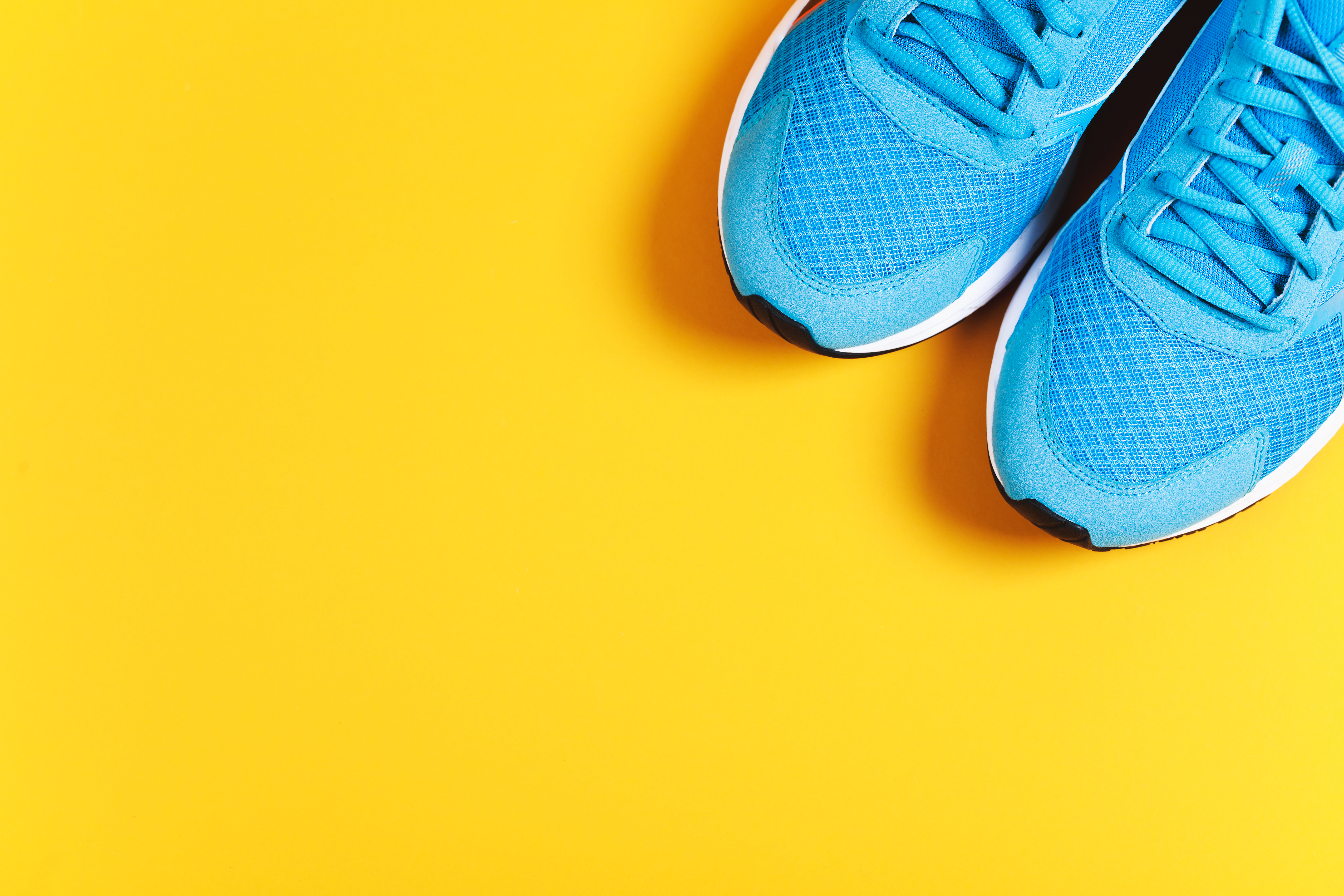I Used ChatGPT as My Personal Trainer. It Didn’t Go Well

I love running. I will happily jog for hours (and often do, during marathons). But ask me to perform a push-up, and I might cry. I truly detest strength training.
Unfortunately for me, it’s extremely good for you—and for runners who want to get faster. So I decided to add in two strength-training sessions per week in preparation for running the Boston Marathon this spring.
[time-brightcove not-tgx=”true”]
I wanted exercises designed to improve my pace, but didn’t want to spend money on a personal trainer. Unsure of how to start, I turned to ChatGPT.
The chatbot did not give me the workout regimen I was hoping for—and after following its recommendations for nearly a month, I was no closer to liking strength training. But I learned some things along the way that might end up helping me become a better runner.
Lesson 1: ChatGPT is not much of a coach
OpenAI’s free AI chatbot is trained on vast amounts of data from sources around the Internet so it can answer prompts with human-like text. To test out its workout recommendations, I first asked it to create a marathon training plan.
As a running coach who’s finished more than a dozen marathons, I have a good sense of what a solid training schedule looks like. The ChatGPT results were—not that. Although it told me to run about six days a week at various speeds and distances (so far, so good), it listed hill sprints and intervals without essential details like how fast or far. It also gave me no runs longer than 14 miles, aside from the suggestion to run a full marathon a week before the end—something no legitimate coach would ever advise, since that’s far too taxing on the body to be beneficial, especially so close to race day. I asked the question twice more, adding details about my fitness level and goals. Now, it only told me to run up to 12 miles. In comparison, the longest run on most respectable marathon plans is 18 to 22 miles.
Read More: Your Brain Doesn’t Want You to Exercise
It’s not hard to find a decent training plan online. So although I didn’t expect ChatGPT to invent a mindblowing regimen, I was surprised that the plans it spat out were so underwhelming and at times incomprehensible. But maybe I shouldn’t have been. What ChatGPT does so well is generate “a human-like, natural language output,” explains Richard Bayly, vice president of product, AI, and data at PEAR Health Labs, which owns the AI-powered fitness app Aaptiv. But while the chatbot is designed to sound like it knows what it’s talking about, it doesn’t.
ChatGPT’s primary skill lies in sounding human, not in giving expert recommendations. The website even include a disclaimer to “check your facts,” stating that the chatbot is not intended to give advice. Even so, people are already using the site for workout suggestions. (OpenAI didn’t respond to a request for comment for this piece.)
Lesson 2: ChatGPT generated decent exercise ideas
Although it failed my marathon plan litmus test, I still wanted to see if ChatGPT could give me some ideas for strength training. After asking “which body weight–only strength training exercises will help me run faster,” it listed 12 exercises that seemed fairly solid, hitting almost all the major muscle groups used in running. But as I started to do the workout, I realized I didn’t have any information on sets, reps, or whether I should do each exercise one at a time versus in a circuit.
I’m not the only one who has discovered ChatGPT’s workouts are missing fundamental details. One January 2024 study evaluating ChatGPT-generated workouts found its exercise recommendations were only 41% comprehensive—meaning its answers didn’t include all of the American College of Sports Medicine’s six components of exercise prescription: frequency, intensity, time, type, volume, and progression.
Read More: This Is the Best Time of Day to Work Out
Yet the researchers did find the workouts to be 90% accurate. Most of the inaccuracies involved telling people to get medical clearance to exercise when they didn’t need it. That might seem innocuous, but Linda Pescatello, a professor in the department of kinesiology at the University of Connecticut and one of the study’s authors, says this could discourage people from exercising altogether. “Requiring someone to get medical clearance is a major deterrent to undertaking an exercise program,” she says.
Done right, AI has real potential to get more of us moving. In a recent report funded by the sportswear company ASICS, 62% of women named the high cost of trainers as a major barrier to exercising. A free, easily accessible chatbot offering targeted, on-demand workout advice on a mass scale could be a boon to public health.
Lesson 3: The chatbot’s workouts are boring and uninspired
Two weeks into my strength-training plan, I found myself skipping certain moves and swapping in others instead. The problem was, I didn’t trust Coach ChatGPT. Did I really need to do burpees, or had the chatbot simply come across them in some random “workout for runners” article? The answers hadn’t given me any information on why I was doing the moves, or links to learn more, so I kept questioning the efficacy of the exercises.
Also, the workout was boring, made up of basic American gym-class exercises that felt cookie-cutter, despite all the personal info I’d included in my prompts.
“There’s the science of exercise prescription, and there’s the art,” says Pescatello. A robot might have completed my prescribed workout and gotten results, but I’m far too human to pump out the same 12 bland moves with gusto—especially without a trainer to hold me to it. “It doesn’t account for humanity at all,” says Kristie Larson, a New York–based personal trainer. “Sure, it might write a very good training plan—if you were also a machine.”
Lesson 4: Turn to a human if you get injured
At one point, my sartorius muscle in my thigh started to act up. I asked ChatGPT, “Can I still run if my sartorius muscle hurts?” It gave me a vague, long-winded answer that wasn’t exactly “no,” but suggested I stick to low-impact activities like walking if the “pain is mild and improving.”
I brought this up with New York-based adidas running coach Jessica Zapotechne. Was this sound or overly conservative advice? “That question makes me think about a topic that I talk with athletes about a lot, which is distinguishing between pain and discomfort,” she tells me. There are different types of hurting, and determining what is simply part of training versus signs of an injury requires “a list of questions to go through,” she says. That’s another problem with AI coaches: They don’t ask questions, the way a human coach typically would.
Read More: Should I Use a Foam Roller?
“You’ve got to be very careful about your inputs, because if you have bad inputs, you’re going to have bad outputs,” says Bayly of PEAR Health Labs. “A generative AI chatbot is relying largely on information that’s widely available. I don’t think there’d be a lot of difference between a generic program that you might be able to download off the Internet versus something the chatbot might return if you are not specific enough.” AI-based workout apps like Aaptiv have users answer several questions about their goals, experience, age, and more upfront in order to generate personalized recommendations, which are then refined further by tracking what the user does on the app, à la Netflix.
The trouble is, someone who’s looking to AI for exercise ideas probably doesn’t know exactly what details they’d need to share to get the most helpful answer.
“The person who has the skill to write a great command probably has enough skill to just write the workout,” says Chicago-based strength coach Elisabeth Akinwale. On the other hand, she adds, if someone is asking ChatGPT for workout help, they might not have the knowledge to realize when it spits out something wacky, like my marathon training plans. “They don’t have the discernment to say, no, that doesn’t sound right,” she says.
So what is ChatGPT good for, in the world of fitness?
In a word: “Variety,” says Pescatello. “One of the capabilities AI has in any profession is it can be a great search tool. With careful prompting, you could specify your preferences and an output could be generated that gives you more options than you feel there are now.” Larson echoes that sentiment, saying it would be best used by someone experienced who’s just looking to mix things up with a new idea to add to their rotation.
Still, you’d have to fit within a narrow population to get the best results. Pescatello says her team found that ChatGPT’s recommendations are currently biased toward adults and lack cultural awareness or considerations for disabilities. Their analysis also scored the readability at the college level.
Read More: The 3 Most Effective Exercise Moves That Don’t Require Equipment
Despite ChatGPT not turning out to be the free personal trainer I wanted, I’m still doing some of its recommended strength-training exercises regularly. I haven’t gotten faster yet, though we’ll see what happens on marathon day.
I find I keep going back to ask ChatGPT my 3 a.m. workout questions that feel too silly or inconsequential to bother another human with. It’s proven most useful after a session talking to a sports dietitian, when I needed a simple explanation of “anabolic potential.” The first few results Google brought up were too sciencey, but when I asked ChatGPT to define it for an eighth grader, I got exactly what I was looking for: “the body’s ability to build and repair tissue, especially muscles.” I’m finally using it for what it’s designed to do: not to give exercise advice, but to generate natural-sounding, easy-to-understand language.
View original article
Contributor: Jennifer Heimlich

